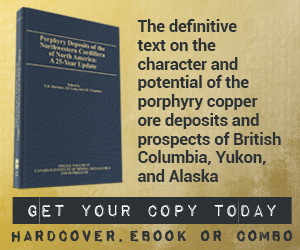Library Magazine Articles When is a Mineral Resource not a Resource?
When is a Mineral Resource not a Resource?
Rod Webster - Oct 2015
Many mining companies are cutting exploration budgets to survive the current mining downturn and low commodity prices. As a result, some firms either do not have enough geological and support staff or they have inexperienced staff members who do not adequately understand the geology, mining method used and processing aspects of their operation or project. This can negatively impact the quality of Mineral Resource or Reserve estimates and statements as well as the preparation of long-term mine plans.
When a company lacks proper staffing, the quantity of the remaining Mineral Resources and Reserves after initial mining suffers. Some mines, for example, now live a hand-to-mouth existence, with enough defined Mineral Reserves for only a year, or perhaps just a few months, due to a lack of drilling, geological evaluation and mine planning. Some mines are being forced, because of this dearth of defined Measured and Indicated Resources, to include Inferred Mineral Resources (as defined by the National Instrument 43-101 code) as Reserves. Both instances result in a limited understanding of possible dilution and ore losses, stemming from a poor understanding of the mineralization, geology and geotechnical issues.
Most international reporting standards define Mineral Resources as having “a reasonable prospect of eventual economic extraction.” The company CEO and investors must ask if this requirement is being overlooked or ignored to keep the remaining reported Mineral Resources at a reasonable level to maintain the share price. Is the modest exploration that is now being carried out concentrating on known areas of higher grade in order to maintain the company’s key market-related performance indicators?
Companies should focus on areas necessary to underpin their medium- to longer-term future. It is a frustrating catch-22 situation, where a lack of reported Mineral Resources and Reserves, due to limited exploration and geological modelling, or even doubts as to the quality of those Resources and Reserves, lowers the perceived value of a company. This results in a lower share price, a reduced ability to raise funds and a need to conserve existing funds. It also reduces a company’s ability to undertake exploration, Mineral Resource modelling and mine planning resulting in a further reduction in Mineral Resources and Reserves.
Other problems that have been recognized recently in the estimation and reporting of Mineral Resources and Reserves include:
- Inclusion of low-grade Mineral Resources located deep below the surface, when it is unlikely that this material can be mined by underground means at such a low grade or by open-pit methods at that depth.
- Substantial tonnages of Mineral Resources and Reserves being based on one drillhole intersection, with the influence of that intersection being unreasonably extrapolated.
- Large areas of what is most likely barren material being classified as Mineral Resources and Reserves due to “smearing” (or spreading) of high-grade drillhole intersections into areas of limited data by inexperienced resource modellers.
- A percentage of the remaining Mineral Resources and Reserves being based on very narrow veins adjacent to previously mined underground voids, which would most likely never be mined based on the vein width, grade, geotechnical issues and, if applicable, cost of backfill.
- Crown and sill pillars being included in Mineral Resources and Reserves where there are no reasonable prospects of mining due to ground support or surface environmental issues.
- The classification of Mineral Resources, and hence Reserves, being based only on statistical parameters (generally distance to samples) and not on geology or trends in mineralization.
- Insufficient understanding and use of geological interpretations during Mineral Resource modelling and grade estimation, due to advances in software and extensive use of statistics. This results in models not properly representing the mineralization, especially around the margins, of many advanced mines.
- Areas of previous underground mining not having been removed from the Mineral Resource and Reserve statements.
- Poor allowance being made for the minimum mining width within narrow veins, resulting in excessive dilution and a lowering of the mill head grade below that required to be economic.
- Poor auditing of Resources and Reserves for operating mines.
- Limited due diligences being carried out on existing Mineral Resources and Reserves by potential purchasers of existing mines or recent discoveries.
Substandard estimation and reporting of Mineral Resource and Reserves can lead to serious problems. Shareholders and company directors need to know the true value of a company, and one of the most important measures is the quantity and quality of the Mineral Resources and Reserves. Having the necessary qualified and experienced staff, either in-house or on hand, to carry out detailed project-focused exploration, high-quality Mineral Resource and Reserve estimation and practical mine planning with sound geotechnical input is a necessity, not a nicety.
Author
Rod Webster works for AMC Consultants in its Toronto office and has more than 35 years of experience as a geologist, working mainly in resource and reserve estimation, review and reconciliation. His experience covers all facets of general geology but has focused on deposit evaluation, from initial drilling through to deposit definition and resource estimation.

.png)
